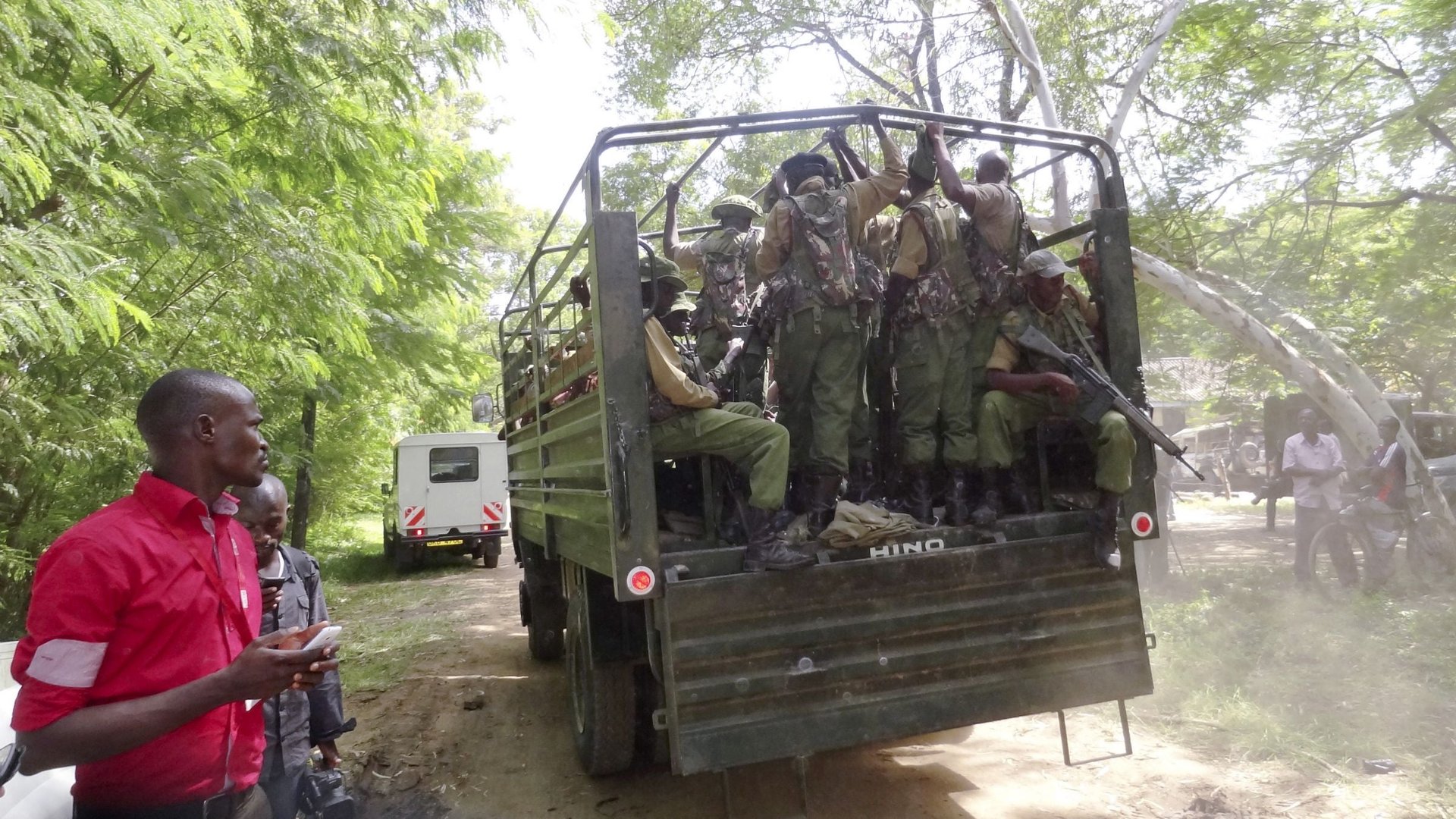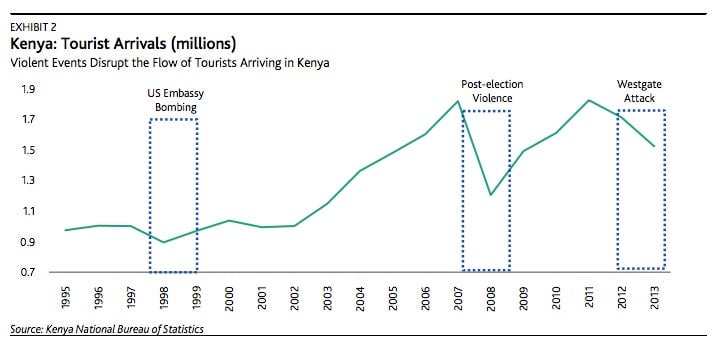Kenyan tourism is drying up as security deteriorates
Kenya’s security situation continues to deteriorate. Attacks along Kenya’s coast left roughly 65 dead in two separate attacks last week. The Somali Islamic militant group al-Shabaab, which has claimed responsibility for the attacks, was also behind the attack on the Westgate Mall in September 2013, which left at least 67 people dead, including many foreigners.


Kenya’s security situation continues to deteriorate. Attacks along Kenya’s coast left roughly 65 dead in two separate attacks last week. The Somali Islamic militant group al-Shabaab, which has claimed responsibility for the attacks, was also behind the attack on the Westgate Mall in September 2013, which left at least 67 people dead, including many foreigners.
Besides the human costs, the attacks are also taking an economic toll. The US and the UK have issued tourism advisories that warn their citizens of terrorist attacks and kidnappings. The ongoing unrest, and the Kenyan government’s initial response of blaming political opponents for the violence, are a key risk to Kenya’s crucial tourism industry, which otherwise seemed poised to grow, as the chart below shows.

According to analysts from Moody’s Investors Service, the tourism industry employs 12% of the country’s workforce and accounts for 13.7% of GDP—counting both direct and indirect effects. Some estimates suggest that further tourism-related activities—such as investment in hotels, cleaning services and airline activity—account for another roughly 5.5% of GDP. Moody’s notes:
Hotels in the game reserves are still operating at less than 50% occupancy rates and an immediate recovery in coastal tourism—where the threat level remains elevated—appears unlikely, certainly not in time for the summer peak season. All of this points to a further drop in tourist arrivals for 2014—the number of foreign visitor arrivals had already been on a steady decline, from 1.8 million in 2011 to 1.5 million in 2013.